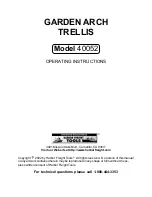
c)
Do not use this charger to charge other batteries. The charger is designed to recharge the lithium-
ion battery type and voltage specified. Using the charger with other batteries poses a risk of fire,
explosion or injury.
d)
The charger should be kept clean. A risk of electric shock exists if the charger is dirty.
e)
Before each use, check the charger, cable and plug. If you find damage, do not use the charger.
Do not open the charger yourself.
f)
All repairs must be entrusted to a qualified specialist who will only use original spare parts. There is
an increased risk of electric shock if the charger, cable or plug are damaged.
g)
The charger should not be placed on a highly flammable surface (paper, textiles etc.)
h)
The charger heats during operation and can cause a fire.
i)
Incorrect use can cause leakage of battery fluid. Avoid contact with the liquid. If liquid contacts
eyes, seek medical help. Battery fluid can cause skin irritation and burns.
j)
A battery should never be opened. This causes a risk of short circuit.
k)
The battery should not be exposed to a heat source (e.g, fire, sunlight). This causes a risk of
explosion.
l)
A battery should never be bypassed. This causes a risk of explosion.
m)
If the battery is damaged or used improperly, toxic fumes may be emitted.
n)
These vapors irritate the respiratory tract. In case of discomfort, ventilate the room well and see a
doctor. If the power cord from the charger is damaged, it must be replaced by the manufacturer, its
service agent or similarly qualified person in order to avoid danger.
Safety instructions: Blades
a)
Never touch the blades.
b)
Do not touch the cutting material with hands.
c)
Do not remove the cutting waste while the blades are moving. Always turn off the device before
removing any blocked material.
d)
When using a power tool, a simple moment of inattention to cause serious injury.
e)
Wait for the complete cessation of blades before transporting the unit.
f)
Carry the tool always by the isolated handles. The cutting blade can be in contact with the wiring or
tool’s own cord. The cutting blades in contact with a "live" wire can also make exposed metal parts
of the power tool "live" and cause an electric shock to the operator.
g)
Always place the blade cover before storing or transporting the unit. Proper handling of the tool
reduces the possibility of personal injury from the cutting blades.
h)
The cable must stay away from the work area. If it is hidden in the grass or bushes to be cut, it may
be accidentally cut. Always check the presence of foreign objects in the hedge, as iron fences for
example.
i)
Always use a residual current device with a breaking current less than or equal to 30 mA.
j)
Hold the tool appropriately, for example with both hands if it has two handles.
TOOL PARTS AND ASSEMBLY








































